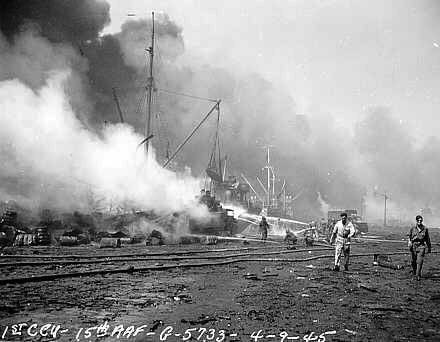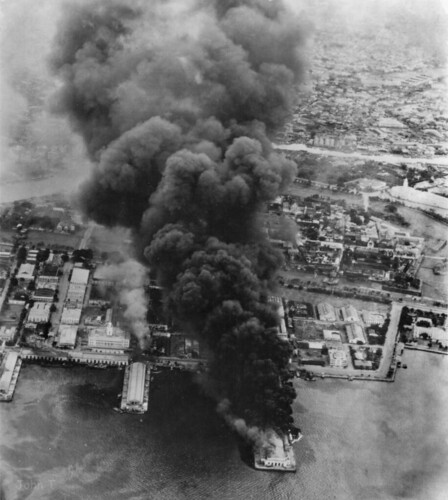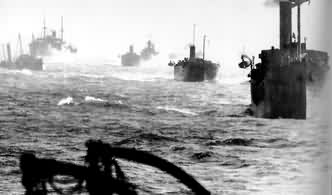The sudden Soviet suprise strike (haha, I love this, consider it trademarked :rofl: ) in the height of winter struck the Swedish Army a blow from which it would never recover. Over Christmas and New Year, it fought a series of running battles through the nothern forests of Sweden with Soviet forces.
What was most remarkable to the entire world was that the Swedes had managed to keep organsied enough to run at all! A series of factors contributed to this, foremost was the slowness of Soviet armoured units in the frozen forests of the north, and the absence of the VVS, which was strectched to capactiy as it was, and was only on call to provide fighter cover.

With the lack of air support and slowness of the armour, it fell to Soviet infantrymen such as these to advance.

Overview of the advance, 1 and 1/2 months into the Second Winter War.
The absence of the VVS was solved somewhat in mid-Febuary, when the commanders of the Moskva and Leningrad CAG's were ordered to being attacks on Swedish shipping. As their parent ships were not yet complete, it was decided that actual combat experiance for the pilots would not go amiss.
The target was Karlskrona, where the Swedish Navy, as well as several squadrons of its air force was based, apparently waiting for Soviet units to advance into range. Over three days and nights, concurent attacks by Soviet aircraft severly damaged the Swedish ships, and the sinking of the heavy crusier Oscar II was reported, but not confirmed. The aircraft on the ground were also severly damaged, as was the airfeild and port facilites.

Bomb detonations from Russian aircraft. The American-pattern destroyer, belonging to 1.Jagerflottjen was luckly to escape intact, at least half of its sister ships were sank or damaged.

Few ships in port escaped damage, with the exeption of the trio of Swedish battlecrusiers, which put up such a cloud of anti-aircraft cover as to make attack sucidal.
However, the CAG groups were needed elsewhere, for one month later, the two of the first carriers of the Soviet Navy, the Moskva and the Leningrad were complete, and finished sea trials.

The Moskva on sea trials. The carriers were already a outdated design, but they gave designers a good canvas from which to work on.

Elsewhere in the world, the Soviet war machine ground on relentlessly. In the Middle East, pro-communist governments in Saudi Arabia and Iraq had been established, and in a unusual move, Italy handed over control of a large portion of its forces in the Middle East to Soviet control. They were quickly organised into a garrison force for the former British possesions in Africa and the Middle East.
In India, all British resisitance ended by mid-April, all British units having been evacuated or driven into the sea. The Red Army in the east was immediatly re-organsied, with the best units being sent back to the Far East Military Sector for other duties, and three armies formed into the Indian Military District, to garrison the sub-continet.

However, it had been wishful thinking to consider the fighting in India ended. Mixed units of South African troops and American marines landed in western India before Soviet units could take up garrison, and began moving into the interior of the country. Furthermore, they brought with them extensive air assets, and a ferice campaign of bombing followed, with every Allied mission interupted with by the VVS.

Soldiers of the Red Army on the advance in India. The RAF in India made advances a dangerous prospect, and many Soviet units were badly hurt.
Despite the suprise and speed with which the South African troops deployed, the Red Army Command in India was quick to respond, and within a week a corden was estabished around the Allied troops. Mechanized units broke through and threatened the port through which the landing depended on.

There was better news the next month. Following a epic month long battle for Oslo, the Norwegian government had decided to throw in the towel, and fled the country. Effective resistance disintergrated, and Norwegian units which had been holding the Red Army up in the hills fell apart, as de-moralised soldiers abandoned resistance, leaving Sweden in the lurch.

Soviet troops dashing down a Olso street, past the body of one of the brave New Zealander defender. Despite bravery, the New Zealanders stood little chance against the gained experiance of the Red Army at urban combat.

Situation following the Norwegian collapse.
What was most remarkable to the entire world was that the Swedes had managed to keep organsied enough to run at all! A series of factors contributed to this, foremost was the slowness of Soviet armoured units in the frozen forests of the north, and the absence of the VVS, which was strectched to capactiy as it was, and was only on call to provide fighter cover.

With the lack of air support and slowness of the armour, it fell to Soviet infantrymen such as these to advance.

Overview of the advance, 1 and 1/2 months into the Second Winter War.
The absence of the VVS was solved somewhat in mid-Febuary, when the commanders of the Moskva and Leningrad CAG's were ordered to being attacks on Swedish shipping. As their parent ships were not yet complete, it was decided that actual combat experiance for the pilots would not go amiss.
The target was Karlskrona, where the Swedish Navy, as well as several squadrons of its air force was based, apparently waiting for Soviet units to advance into range. Over three days and nights, concurent attacks by Soviet aircraft severly damaged the Swedish ships, and the sinking of the heavy crusier Oscar II was reported, but not confirmed. The aircraft on the ground were also severly damaged, as was the airfeild and port facilites.

Bomb detonations from Russian aircraft. The American-pattern destroyer, belonging to 1.Jagerflottjen was luckly to escape intact, at least half of its sister ships were sank or damaged.

Few ships in port escaped damage, with the exeption of the trio of Swedish battlecrusiers, which put up such a cloud of anti-aircraft cover as to make attack sucidal.
However, the CAG groups were needed elsewhere, for one month later, the two of the first carriers of the Soviet Navy, the Moskva and the Leningrad were complete, and finished sea trials.

The Moskva on sea trials. The carriers were already a outdated design, but they gave designers a good canvas from which to work on.

Elsewhere in the world, the Soviet war machine ground on relentlessly. In the Middle East, pro-communist governments in Saudi Arabia and Iraq had been established, and in a unusual move, Italy handed over control of a large portion of its forces in the Middle East to Soviet control. They were quickly organised into a garrison force for the former British possesions in Africa and the Middle East.
In India, all British resisitance ended by mid-April, all British units having been evacuated or driven into the sea. The Red Army in the east was immediatly re-organsied, with the best units being sent back to the Far East Military Sector for other duties, and three armies formed into the Indian Military District, to garrison the sub-continet.

However, it had been wishful thinking to consider the fighting in India ended. Mixed units of South African troops and American marines landed in western India before Soviet units could take up garrison, and began moving into the interior of the country. Furthermore, they brought with them extensive air assets, and a ferice campaign of bombing followed, with every Allied mission interupted with by the VVS.

Soldiers of the Red Army on the advance in India. The RAF in India made advances a dangerous prospect, and many Soviet units were badly hurt.
Despite the suprise and speed with which the South African troops deployed, the Red Army Command in India was quick to respond, and within a week a corden was estabished around the Allied troops. Mechanized units broke through and threatened the port through which the landing depended on.

There was better news the next month. Following a epic month long battle for Oslo, the Norwegian government had decided to throw in the towel, and fled the country. Effective resistance disintergrated, and Norwegian units which had been holding the Red Army up in the hills fell apart, as de-moralised soldiers abandoned resistance, leaving Sweden in the lurch.

Soviet troops dashing down a Olso street, past the body of one of the brave New Zealander defender. Despite bravery, the New Zealanders stood little chance against the gained experiance of the Red Army at urban combat.

Situation following the Norwegian collapse.






















